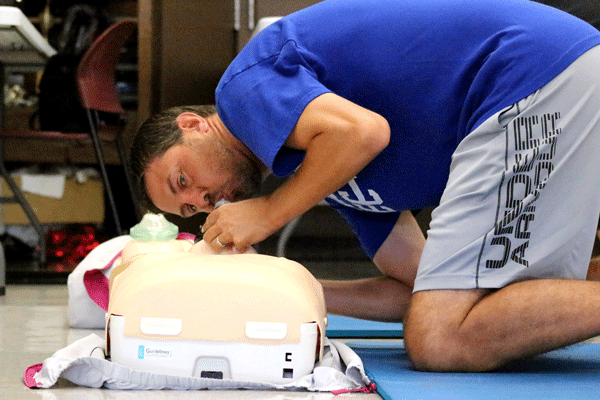What’s Your Emergency?
Accidents can happen at any time, especially when someone least expects it.

Sometimes in the hustle and bustle of high school, safety can be in the back of our minds. Running to get to class on time and staying up all night to write an essay seems more important than overall health. In the event of a medical emergency, students, teachers and staff are required to take action. According to SureFire CPR, 27 states have now made cardiopulmonary resuscitation (CPR) a high school graduation requirement. This trend appears likely to continue in the future. In doing so, students with first aid training can help reduce risk and empower others with the ability to assess the situation in the event of a medical emergency.
CPR is when a combination of chest compressions and artificial ventilation are used in an effort to manually preserve heart and brain function for someone who is in cardiac arrest. Every minute CPR is delayed, a person’s chance of survival decreases by 10 percent. Immediate CPR from someone nearby can double or even triple their chance of survival.
“We hope for the best and prepare for the worst,” athletic trainer and physical education student teacher Bryn Nottoli said. “We never know when something will happen and understanding how to help and who to call is critical to the first responder chain.”
Medicine is constantly updating and changing with new features and tools to use. According to Mayo Clinic, the common acronym ABC, standing for airway, breathing and compression, has changed. As of 2016, the acronym has been changed to CAB, standing for compression, airway and then breathing. For those who have not been certified since 2016, old methods will be performed instead of the improved methods.
“Times have changed so much,” physical education department chair Teri Klobnak said. “They used to say that the compressions were important [compared to the breathing], and then the breaths were [more important] later. Now, you don’t technically have to do the breaths anymore. A lot of people in public may not want to do breath and so they were less likely to do full CPR.”
The new first aid and CPR lessons were added into the ACHS health curriculum starting with the class of 2020. New equipment has been added to enhance students’ comprehension and technique. Students then cover basic first aid, CPR and learn about Automatic External Defibrillators (AEDs) in health class.
“You need to know where they are just in case of an emergency,” lifeguard and junior Zoe Johnson said. “Even having an idea of where an AED in public is crucial. You never know what can happen in the future.”
The American Heart Association sets a program for teachers to certify students, but the cost would have to be covered through both the budget and the student cost before the certification course.
“Technically you don’t have to be certified to do to do CPR,” Klobnak said. “I think it’s a good discussion to bring in that kids are wanting to be taught CPR as refresher. We should hear it every year, otherwise, we’re going to lose [the skills].”
A simple accident can turn into an emergency if proper procedures are not followed. Being prepared in case of an emergent situation not only helps the accident move along smoother and quicker, but also provides a valuable life skills that can be carried throughout life.

